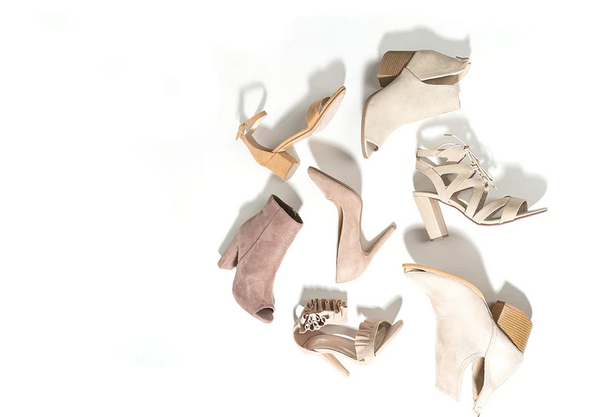Looking for online shopping statistics, reasons for cart abandonment, and consumer habits and preferences? It’s right here.
All about online shopping and consumer habits
Whether you’re thinking about starting an online store or looking for information about internet shoppers, these online shopping statistics are bound to help.
E-commerce Trends and Forecasts
Note: These forecasts were made pre-pandemic.
Retail in General
- Approximately 1.8 billion consumers around the world purchase goods online. (Source: Oberlo)
- China’s online retail sales of goods and services amounted to $333 billion, which is 22.9% of the total. (Source: Oberlo)
- In 2018, Amazon made up 43.5% of the entire online retail market. (Source: Finances Online)
- In 2020, 16.1% of all retail sales are anticipated to happen online. (Source: Shopify Plus)
- By 2021, over 2.1 billion consumers are expected to purchase goods and services online. (Source: Shopify Plus)
- Online shopping revenues are forecast to grow to $4.88 trillion in 2021. (Source: Maryville.edu)
- E-commerce is expected to increase to more than $6.5 billion by 2023. (Source: Shopify Plus)
- By 2040, it is expected that 95% of commerce transactions will happen online. (Source: Adobe)
These were the top categories for online sales in 2018
- Fashion: 61%
- Travel: 59%
- Books and Music: 49%
- IT: 47%
- Events: 45%
(Source: Finances Online)
The most profitable categories in North America:
- Video gaming: 31%
- Packed groceries: 19%
- Medicine: 25%
- Alcoholic beverages: 9%
(Source: Finances Online)
These were the top categories for online sales in Asia Pacific:
- Packed groceries: 40%
- Home care: 37%
- Fresh groceries: 35%
- Video gaming: 30%
(Source: Finances Online)
Online Grocery Shopping Statistics
- In 2018 only 3% of global grocery sales happened online.
- At this time, 20% of shoppers in South Korea already buy their groceries online.
- For 2020, it was predicted that online grocery sales worldwide would increase to 20%.
(Source: Finances Online)

Mobile Retail
- Mobile shopping accounts for 45% of online orders. (Source: Maryville.edu)
- It is estimated that 53.9% of all e-commerce sales will take place on mobile devices by 2021. (Source: Shopify Plus)
- By 2022, it is estimated that $175.4 billion in retail sales will take place over smartphones. (Source: Maryville.edu)
- 67% of mobile users partake in digital window shopping for fun using their smartphones. (Source: OptinMonster)
- Around 50% of consumers shop more via their mobile phones than in-store. (Source: Oberlo)
- Mobile conversion rates are lower than those of desktop – less than half. (Source: Shopify Plus)
- Small retailers may experience better mobile conversion rates – up to 30% higher than large retailers. (Source: Disruptive Advertising)
Online Shopping Overview
The top reasons for shopping online
- 88%: Because you can shop whenever you want, i.e. at any time
- 88%: You can find products quickly
- 84%: Because you can save time
- 84%: There’s a better selection of products online
- 78%: Because you don’t have to queue at stores
- 76%: Prices are cheaper online
(Source: Finances Online)
What are consumers buying online?
- 59%: clothing
- 47%: books, movies, music, games
- 45%: shoes
- 38%: consumer electronics like TVs and smartphones
- 37%: food and beverages
- 33%: cosmetics and body care products
- 24%: bags and accessories
- 23%: toys and baby products
- 22%: drugstore and health products
- 21%: do-it-yourself, garden, pet products
- 20%: furniture and household goods
- 19%: sports and outdoor products
- 17%: stationery and hobby supplies
- 7%: none of the above
- 5%: other

Men vs women
- 68% of men shop online vs 72% of women
| Purchases | Men | Women |
| Travel / Holiday Accommodation | 37% | 35% |
| Household Goods | 32% | 30% |
| Event Tickets | 27% | 26% |
| Film / Music | 22% | 16% |
| Computer / Tech | 39% | 18% |
| Food / Groceries | 14% | 18% |
| Clothes / Sports Goods | 40% | 46% |
| Books / Magazines / E-learning | 23% | 25% |
| Medicine | 8% | 10% |
(Source: OptinMonster)
Differences in Online Spending
| Country | Average revenue per online shopper |
| USA | $1.804 |
| UK | $1.629 |
| Sweden | $1.446 |
| France | $1.228 |
| Germany | $1.064 |
| Japan | $968 |
| Spain | $849 |
| China | $626 |
| Russia | $396 |
| Brazil | $350 |
(Source: OptinMonster)
Online Shoppers’ Preferences
What do consumers want?
- Eco-friendly supply chains
- Sustainable manufacturing
- Zero-waste packaging
(Source: Shopify Plus)

Store Preferences
- 91% of consumers prefer to shop with brands that recognize, remember, and provide relevant offers and product recommendations. (Source: Maryville.edu)
- 73% of shoppers say that the returns experience affects whether they would continue shopping with a retailer (Source: Adobe)
- 69% of shoppers deem not being able to reach a real person post-sale is one of the biggest customer service mistakes a retailer can make. (Source: Adobe)
- To avail of free shipping, online shoppers will:
- Add more items to cart (36%)
- Choose the slowest shipping period (32%)
- Search online for a promotional code (32%)
(Source: Adobe)
Influencing Factors
- Detailed product content is deemed extremely important for a purchase decision by 88% of shoppers. (Source: Disruptive Advertising)
- 43% of shoppers worldwide research products online via social media (Source: Big Commerce)
Payment methods
- 94% of Chinese shoppers use mobile payments while only 45% of Americans will. (Source: Big Commerce)
- Americans prefer digital wallet services like PayPal. (Source: Big Commerce)
- 36% of online shoppers worldwide prefer e-wallet payment methods. (Source: Oberlo)
Site and Cart Abandonment Statistics
General Overview
- 53% of online shoppers will leave a site that takes longer than 3 seconds to load. (Source: Shopify Plus)
- 38% of online shoppers will leave a website if the layout isn’t attractive. (Source: Disruptive Advertising)
- 80% of shoppers are dissuaded by an inconvenient return policy. (Source: Disruptive Advertising)
- 63% abandon their shopping carts because of having to pay extra for shipping. (Source: Oberlo)
- 56% of shoppers abandoned their cart because of additional unexpected costs. (Source: Disruptive Advertising)
- 43% didn’t complete the purchase process because the shipping costs were too high. (Source: Disruptive Advertising)
- 23% of online shoppers said they would abandon their cart if they were prompted to create a new user account. (Source: Disruptive Advertising)
- 46% of shoppers failed to complete an online purchase because there were too many options to choose from. (Source: Oberlo)
- On the bright side: 54% of shoppers would purchase items left in the shopping cart if those items would later be offered at a lower price. (Source: Disruptive Advertising)

US Shoppers’ Reasons for Abandoning Carts
- 63%: Shipping costs were too high
- 46%: The discount code didn’t work
- 36%: Shipping takes too long
- 30%: It was necessary to re-enter their credit card details
- 25%: It was necessary to re-enter their shipping details
(Source: Finances Online)
Checkout Complaints
A poor checkout process deters online shoppers. Here’s what shoppers don’t appreciate.
- 34%: The need to create an account
- 26%: Lengthy checkout process, i.e. too many steps
- 21%: The total order cost isn’t calculated
- 6%: Not enough payment methods offered, i.e. their preferred payment isn’t available
(Source: Finances Online)
Miscellaneous Online Shopping Statistics
- Average conversion rates range between 2.7% and 3.2% in B2C e-commerce for the period of late 2018 into early 2019. (Source: Big Commerce)
- Multi-channel shoppers spend 3x more than single-channel shoppers. (Source: Disruptive Advertising)
- Whether a shopping experience happens online or in a brick-and-mortar store, 63% of the shopping occasion begins online. (Source: Oberlo)
- When it comes to clothes and shoes:
- 57% of shopping journeys that end in an online purchase through any retailer begins with a consumer looking at another website first (29%), visiting a brick-and-mortar store (15%), or both (13%). (Source: hbr.org)
- 47% of shopping journeys that end in an online purchase are either one-stop journeys that begin and end with the same online retailer. (Source: hbr.org)
- 62% of online buyers shop online monthly. (Source: Oberlo)
- 75% of online shoppers’ site search queries are brand new each month. (Source: Oberlo)
- 90% share their data with the retailer because they want to receive product discounts. (Source: Adobe)
Technologies that interest consumers are those that:
- 55%: Show whether a product is in stock
- 49%: Help compare prices or read reviews
- 47%: Make it easier to find a product or its location
- 38%: Try an item before buying it
(Source: Adobe)
What kind of offers do email subscribers want most from retailers?
- 35%: percentage-off promotions
- 20%: free shipping
(Source: Disruptive Advertising)

What are the best sources of traffic for an online retailer?
- Direct navigation
- Search
(Source: Big Commerce)
Why do the majority of shoppers prefer in-store shopping over the digital experience?
- 56% want to see items first-hand
- 55% want to try items on before making a purchase
- 41% want to see if the items looks the same / different in person
(Source: Finances Online)
Here are the channels through which consumers see a product before making a purchase:
- 30%: online shops
- 15%: online ads
- 15%: online reviews
- 10%: social media
- 10%: e-mail
- 7%: online articles
(Source: Finances Online)
The most effective channels of communication to convince consumers to shop at a particular store are:
- 63%: e-mail
- 46%: traditional broadcast media
- 38%: direct mail
- 32%: print ads
(Source: Adobe)
- 72% of people prefer to be contacted by e-mail for business communication. (Source: Disruptive Advertising)
While inside a brick-and-mortar store, shoppers look up the following on their phones:
- 65%: price comparison
- 61%: product information
- 49%: online reviews
- 16%: store inventory
(Source: Finances Online)